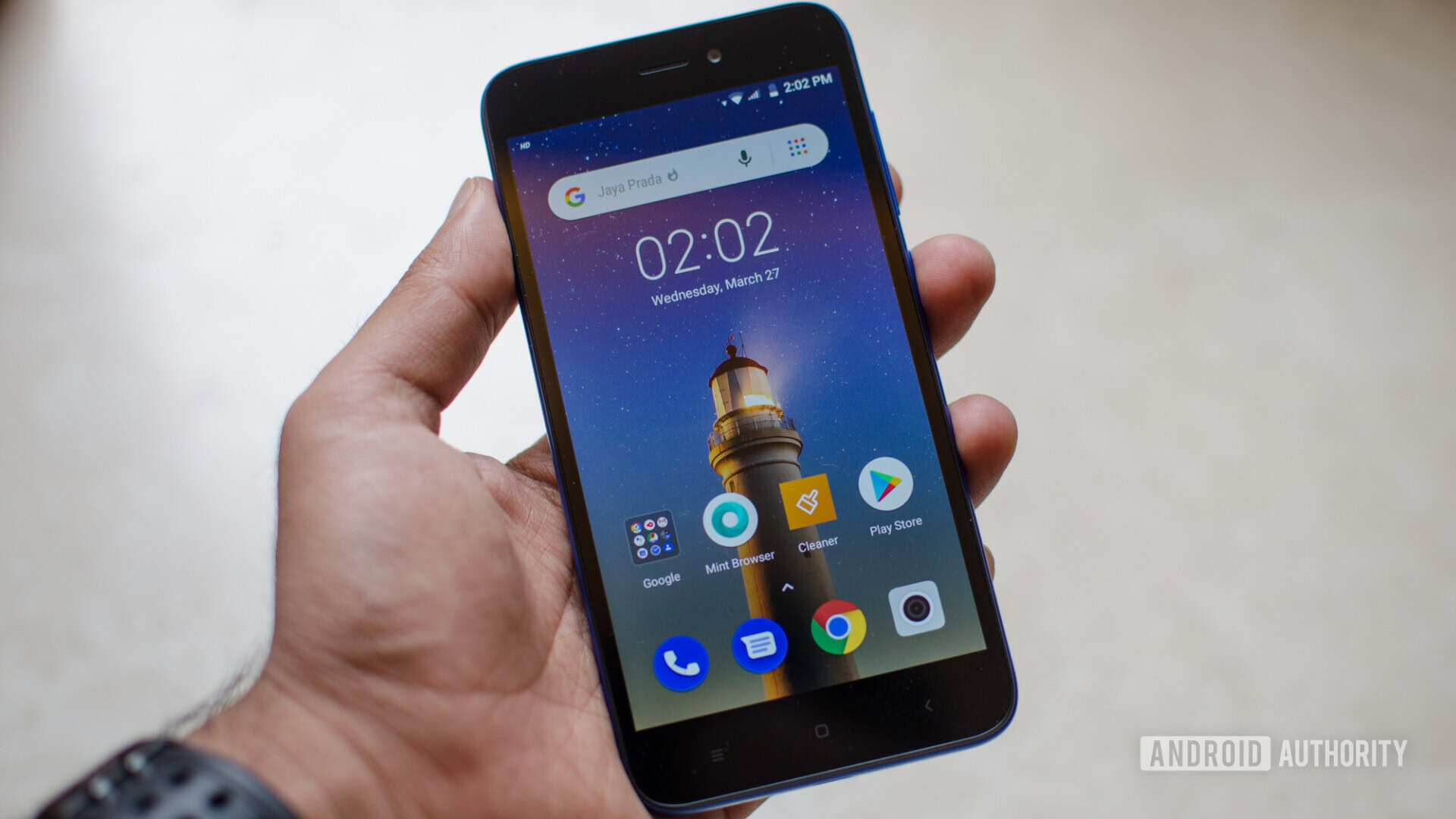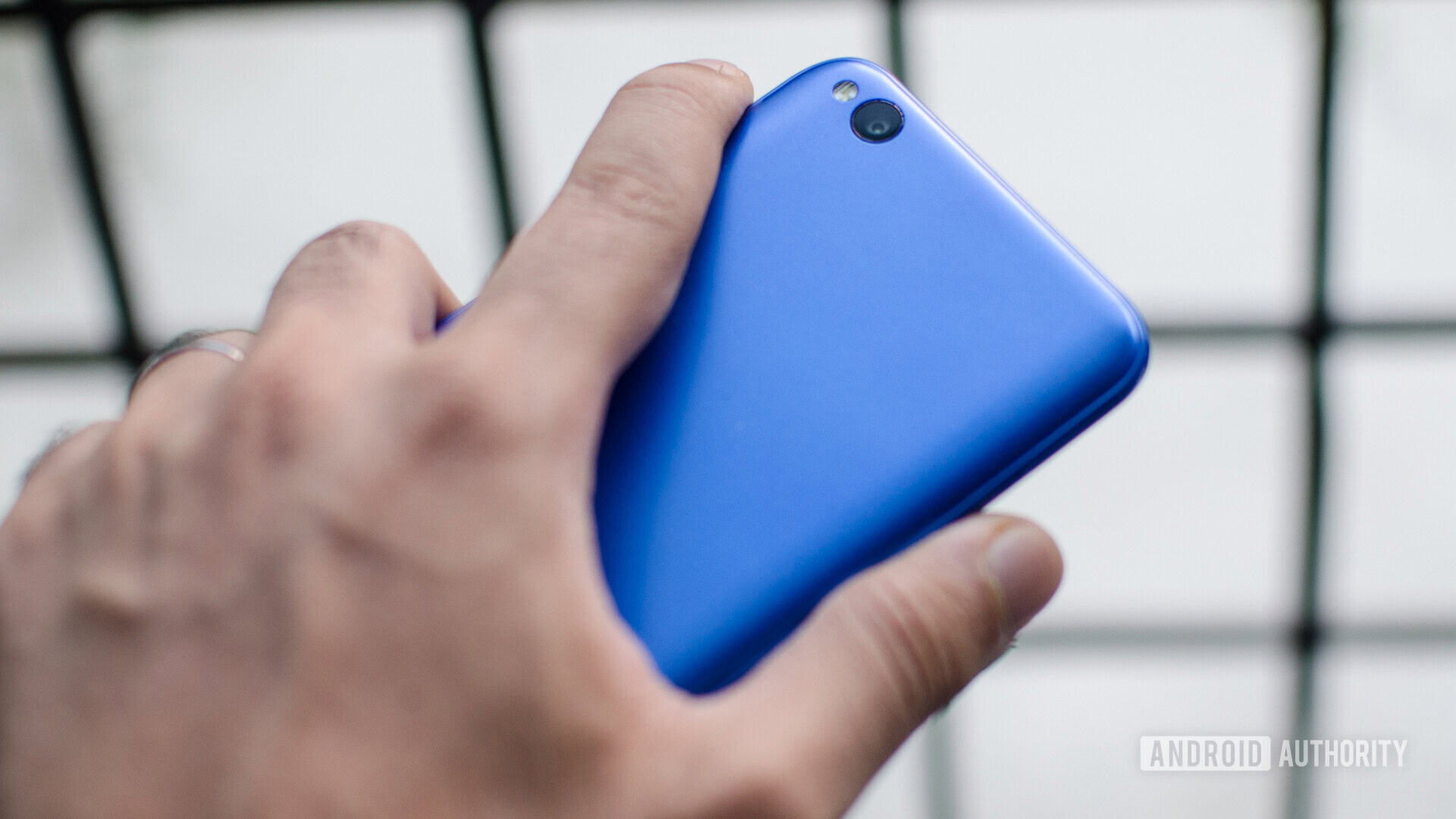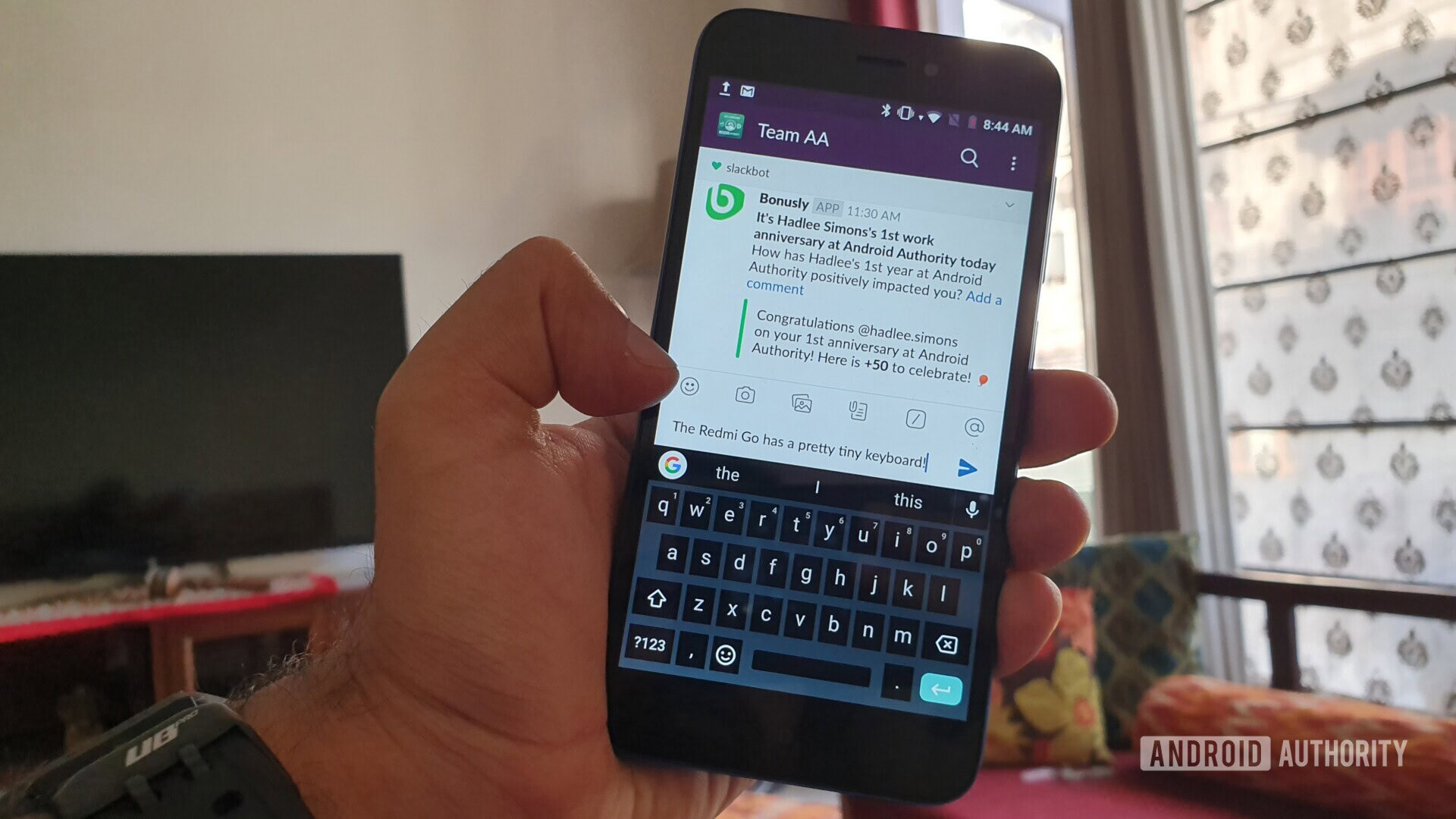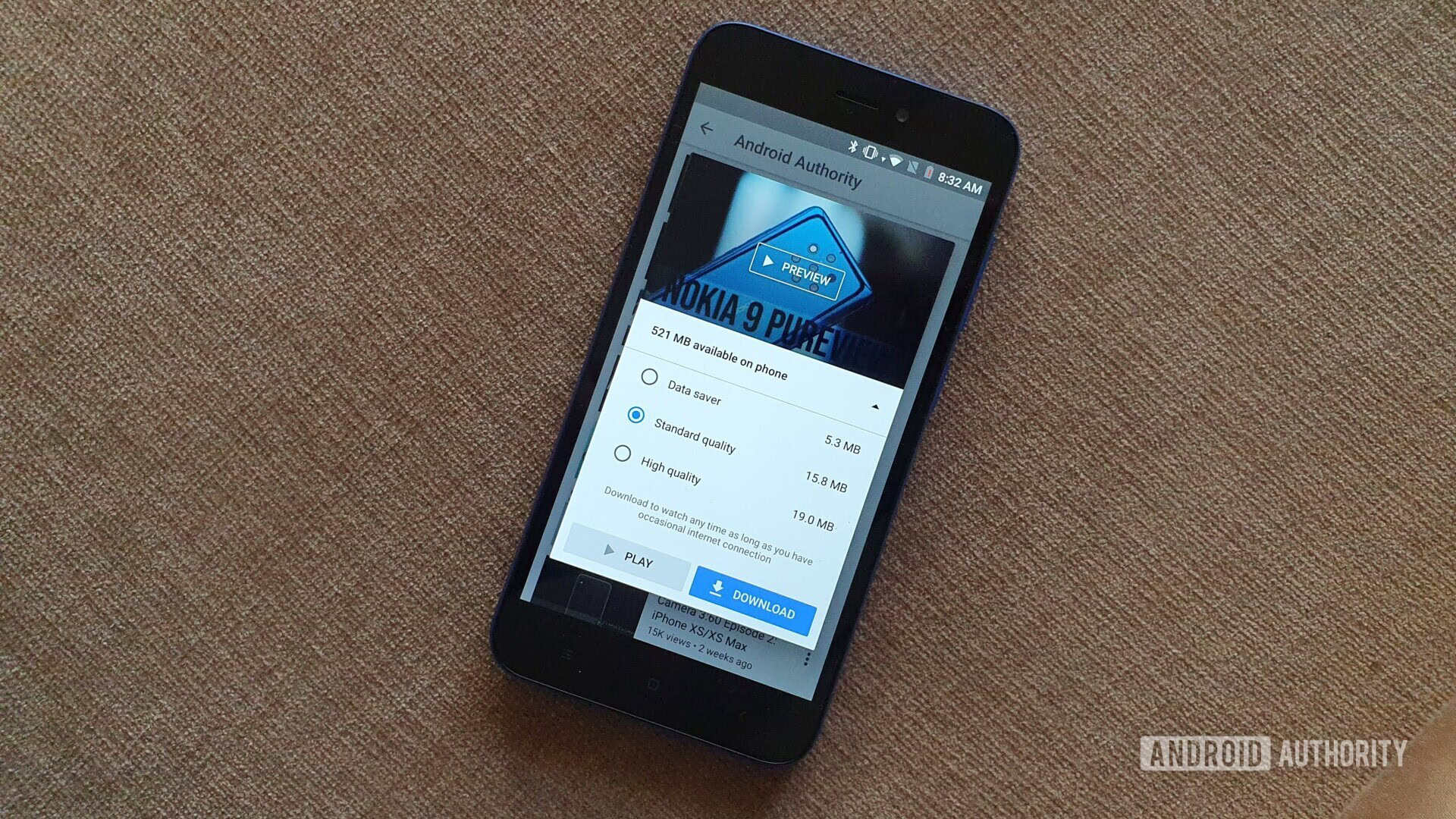Affiliate links on Android Authority may earn us a commission. Learn more.
I traded the Galaxy S10 Plus for a $65 Redmi Go for a week, and it wasn’t all bad
April 4, 2019

When the Xiaomi Redmi Go launched in India, we talked about how the phone is perfectly suited as a first smartphone. At just $65 (4,500 rupees in India), the Android Go-powered handset seems designed to be a transitional device for anyone thinking of upgrading from a feature phone.
Can the Redmi Go handle a modern work load?
It really got me thinking though. We’ve come a long way with smartphones. Trickle down economics and the ensuing democratization of hardware means that even budget smartphones are approaching flagship grade performance from just a few years ago. Of course, the Redmi Go is far from that, but how feasible would it be to use a $65 smartphone as a daily driver?
Could the Redmi Go really handle a modern work load for me where Slack, Asana and WhatsApp serve as the backbone of my day to day use? Surely, if a phone can handle what I can throw at it, it’ll suffice for the majority of users? I made the potentially crazy decision to switch over from the Samsung Galaxy S10 Plus to the Redmi Go for a week to find out just that.
Suffice it to say that it has been an interesting week with some definite surprises.

If you live in India, you’ll know how important WhatsApp is as a communications tool. Communications between family groups, friends, colleagues and even your neighborhood plumber likely happen over the ubiquitous chat platform. This is where I faced the first issue. Years of WhatsApp forwards and images shared with friends and family meant that my backup clocked in at a fairly massive 2.9GB. This isn’t a hassle for most phones, but on a device with just around 3.4GB of free storage, it ended up chomping off a huge bite and left me with precious little to work with for other apps.
Limited storage space would be a recurring issue with the Redmi Go.
The limited space unfortunately became a recurring issue. Sharing images and videos over WhatsApp is a common daily occurrence in India and the Philippines — two primary markets for the Redmi Go. Add to that a bit of music and a few apps and you are looking at a scenario where you are constantly running out of storage.
Expecting a first time user to understand the issue and figure their way around it without deleting critical data is not an easy task. Adoptable storage, you say? Despite trying multiple memory cards and a fair amount of time spent formatting them and trying to move apps, this simply did not work.
Android Go was built around the concept of reducing hardware requirements for both the operating system and apps on the Play Store. Unfortunately, not every app has a “lite” variant available. With Slack, Asana and Spotify installed, I was practically out of any extra storage.

The next problem I came across was the size of the phone. It might be an upgrade from a feature phone, but a 5-inch display is decidedly tiny in 2019. Getting used to the screen size and speed typing was an exercise in frustration. While I did get used to it in a day or so, I can confirm that pecking around a tiny keyboard is no fun!
Its wasn’t all doom and gloom though. Storage woes and my nitpicking aside, the Redmi Go is a surprisingly usable phone. Everything works, be it the generally bloated Slack, Reddit or even Feedly, the phone handled almost every productivity related app that I threw at it. Browsing through hundreds of news items in Feedly wasn’t completely hiccup-free, but it is astonishing how much can be accomplished with sub-$70 phone.
Related: Graduating class: Nexus – Pixel – Android One – Android Go
With just 1GB of RAM you’re not going to be doing a lot of multitasking, but that would be expecting a bit too much.
Not a gaming device
Right off the bat, I realized high-end mobile gaming wasn’t viable on the Redmi Go. I had no issues with basic games on the phone but if you are expecting to run PUBG Mobile you are in for disappointment. The game just doesn’t run on the phone. Regardless, the Redmi Go is nobody’s idea of a gaming device.

The phone ships with a few optimized apps pre-installed on the device. This includes YouTube Go, which has been designed ground up for a reduced memory footprint and lower data use while watching videos. Meanwhile, Xiaomi’s own cleaner app helps you actively get rid of stray files on your phone.
The entry-level Snapdragon 425 chipset paired with a 3,000mAh battery meant that the phone handily lasted a full day of use and more. For the most part, I managed to get a day and a half of battery life on the Redmi Go.
How’s the camera, you ask? I’ll let the samples do the talking. Images from the Redmi Go’s 8-megapixel rear facing camera are serviceable and should allow anyone to capture their favorite moments with reasonable picture quality. With adequate light, you can capture decent looking shots. The photos have limited dynamic range and highlights are blown out, but I wouldn’t judge the Redmi Go too harshly over the merits of the camera. If you want to join the TikTok bandwagon, the app has a lite version available for the platform.
Could you use it as your daily driver?
For all the negatives, my week with the Redmi Go made me realize just how far we have come with technology. It was painful and slow at times, but the fact that I could do most of what I use my daily driver for on an ultra-budget device like the Redmi Go is downright astounding.
The Redmi Go is perhaps the best Android Go device so far
It is far from the definition of a great Android experience, nor would I recommend ditching your current smartphone, especially if you’re coming from a Galaxy S10 Plus — one of the best Android phones on the market — like I did.
Yet if my week with the Redmi Go is anything to go by, it is certainly possible to use an entry level Android Go device as your daily driver. The Redmi Go is perhaps the best Android Go device so far and a few niggles aside, the phone should handily manage anything first time smartphone buyers throw at it.
Thank you for being part of our community. Read our Comment Policy before posting.